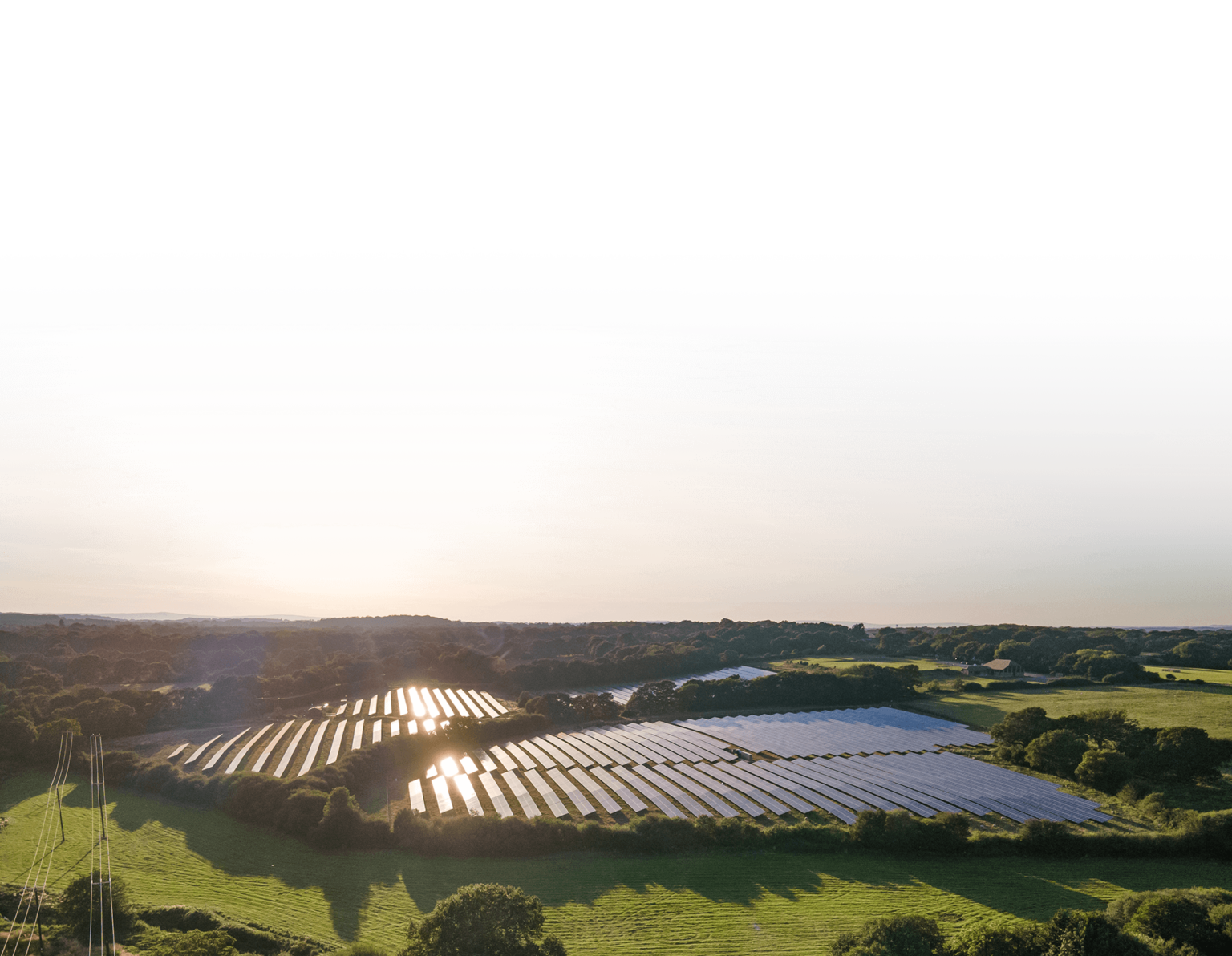About the proposal
Clearstone Energy is applying for planning permission to lay an underground power cable to connect the proposed Willows Green Solar Farm, located to the west of Great Notley Country Park and north of Blackley Lane, with the National Grid Substation, south of Braintree.
It will enable the supply of 50MW of urgently needed, low carbon and renewable energy to local homes and businesses and will significantly assist in helping meet local and National climate change objectives.
Detailed surveys have been undertaken to inform the project and the proposed construction approach will minimise disruption to the environment and wildlife, existing infrastructure, local residents and traffic movements.
The project would take place in 2025 and last approximately 17 weeks. Any surfaces disturbed during construction would be reinstated to their former state.
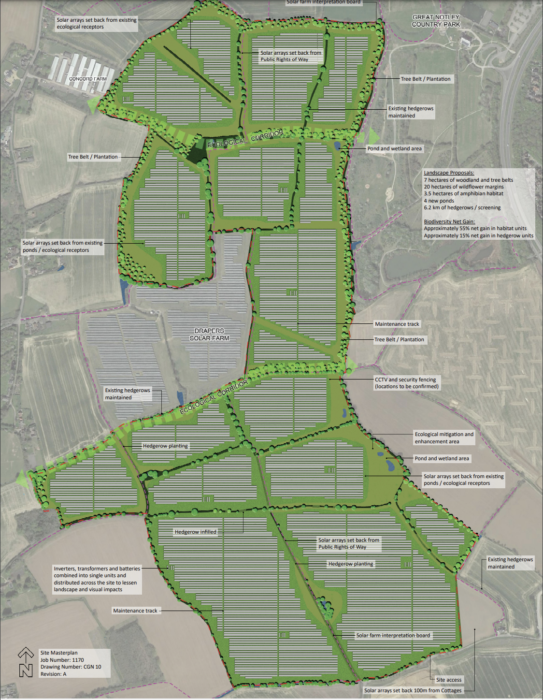
Willows Green
Solar Farm
Willows Green Solar Farm is a proposed solar farm and battery energy storage project.
A planning application was submitted in December 2021 (planning application ref. UTT/22/0007/FUL) for a 40 year period, following which the site will be restored to agricultural use.
The application was recommended for approval by Uttlesford District Council in August 2022 subject to planning conditions and legal agreements on site restoration being in place.
These conditions and agreements will shortly be in place and we are now applying for planning permission for the cable that will connect the solar farm to the electricity grid.
.
Proposed cable route
The cable route runs from Willows Green Solar Farm, located to the west of Great Notley Country Park and north of Blackley Lane, to the National Grid Substation located south of Braintree. The total length of the cable route is 5.3km, 3.2km of this will be under the public highway and 2.1km will be under private land, predominantly open fields.
The cable route run east along Blackley Lane from the southern end of Willows Solar Farm. At London Road the route turns north towards Great Notley until reaching Bakers Lane where it turns right. The route follows Bakers Lane eastwards for 1.5km before turning left onto Buck Hill. At the junction with Notley Road the route turns left (north) before turning off the public highway and onto privately owned land before Notley Road crosses the A120.
The cable runs eastwards across fields, crossing under the River Brain and the railway line between Braintree and Cressing, before connecting to the National Grid’s Braintree Substation.
The cable route is shown in red on the satellite image below.
.
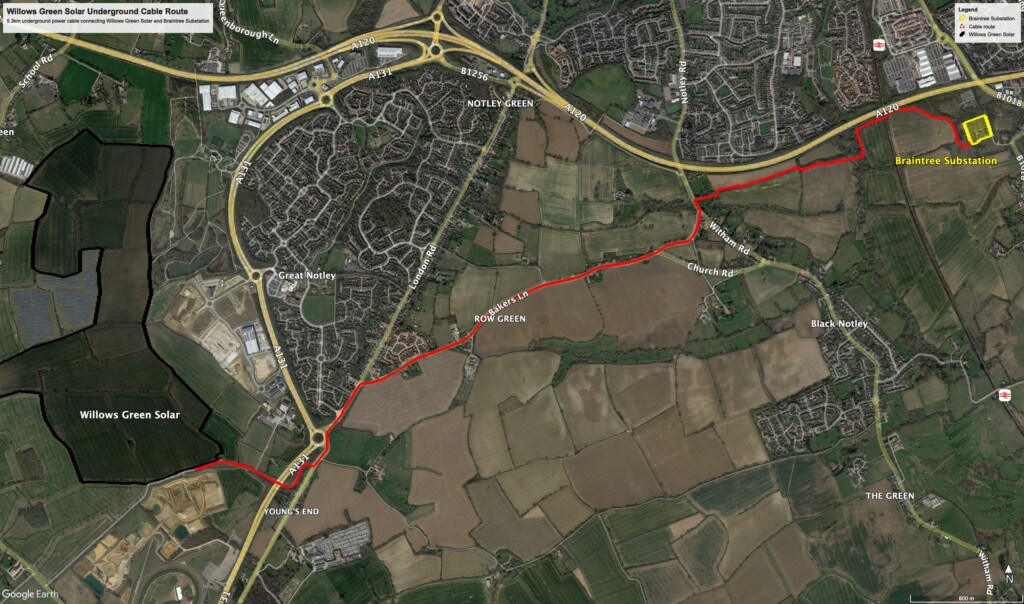
How will the cable be laid?
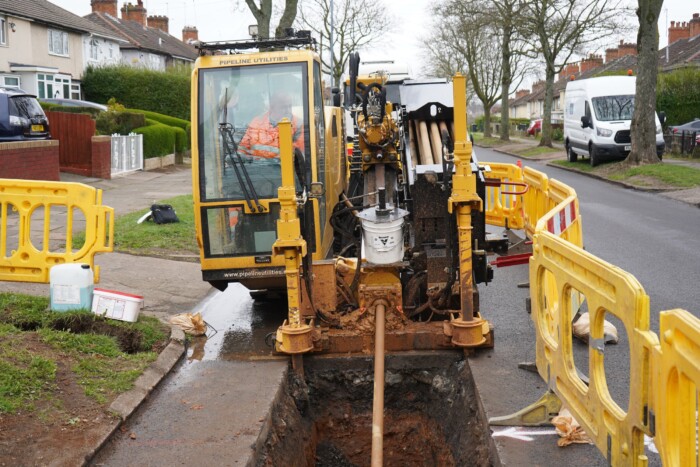
The cable will be laid a minimum of 1.2 metres below ground level. To reduce disruption to hedges, trees, rivers, road surfaces and other infrastructure the cable will be primarily laid using horizontal directional drilling.
Small pits are excavated at either end of a cable run to launch and receive the drill. The drill creates a pilot tunnel on its first pass, on its return it pulls cable ducting back through the tunnel for the power cable to run through.
Where the cable runs through open fields it will be laid by open trench excavation as a faster construction method.
Four temporary construction compounds will be created along the route – all on private land off the public highway – for welfare units and to store equipment.
.
How will traffic disruption be minimised?
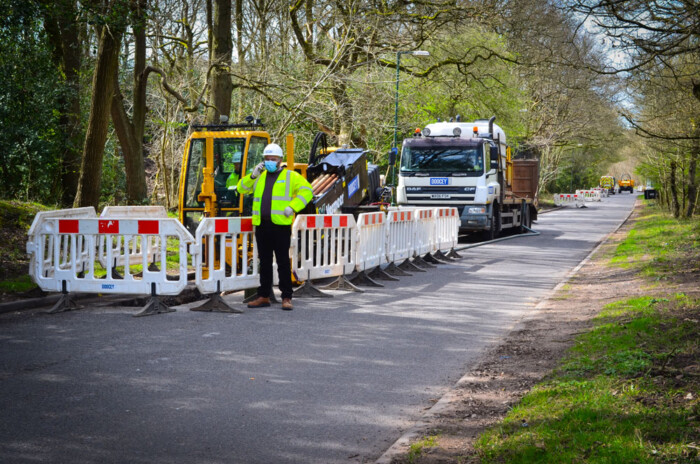
Using horizontal directional drilling to lay the cable under the public highway will minimise road closures and reduce congestion from temporary traffic management measures.
Launch pits would be excavated at intervals along the route for the drilling rig and then reinstated as construction moves from start to end of the cable route. Construction works will only temporarily affect one side of the two-way carriageway along most of the route and 2 or 3-way traffic signals will be used to ensure smooth traffic flow where necessary. A small section of road (Buck Hill) is single lane only and would need to be closed to vehicles for a short period with traffic diverted via Church Road. Construction under the public highway would take approximately 17 weeks.
What will be the impact on public footpaths?

Two public footpaths adjacent to the River Brain will be temporarily impacted by construction.
Public Footpath 21 which runs along the River Brain would need to be temporarily closed where it meets the A120 as construction works pass over this section of the route. Where the cable route passes near to public footpaths 21 and 34, the construction area would be secured with temporary fencing to ensure the safety of pedestrians and animals.
Once the work is completed there would be no change to the existing public footpath routes and any surfaces disturbed by construction would be reinstated.
How will wildlife impacts be minimised?
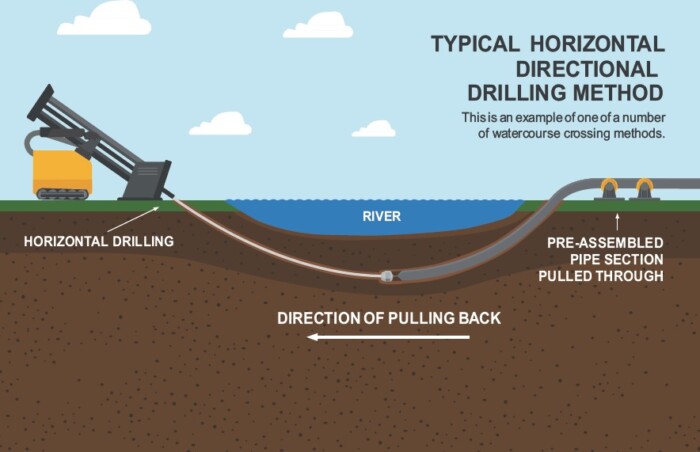
An ecological appraisal has been prepared as part of the planning application. No wildlife designations are impacted (directly or indirectly) by the proposals. The appraisal confirms that the cable route choice and installation methods have been designed to avoid wildlife habitats.
In particular, HDD will be used in a number of ecologically sensitive areas, such as woodland, hedgerows and the River Brain. This effectively bypasses these habitats and avoids any impacts on them.
The project proposal also includes a number of wildlife ecological enhancements including:
- Provision of five bat boxes affixed to mature trees at 5m from ground level;
- Provision of five bird boxes affixed to mature trees at 5m from ground level;
- Infilling of hedgerow gaps where required to create Intact hedgerow boundaries. and
- Provision of two wood pile habitats for overwintering amphibians and reptiles.
How will environmental impacts be minimised?
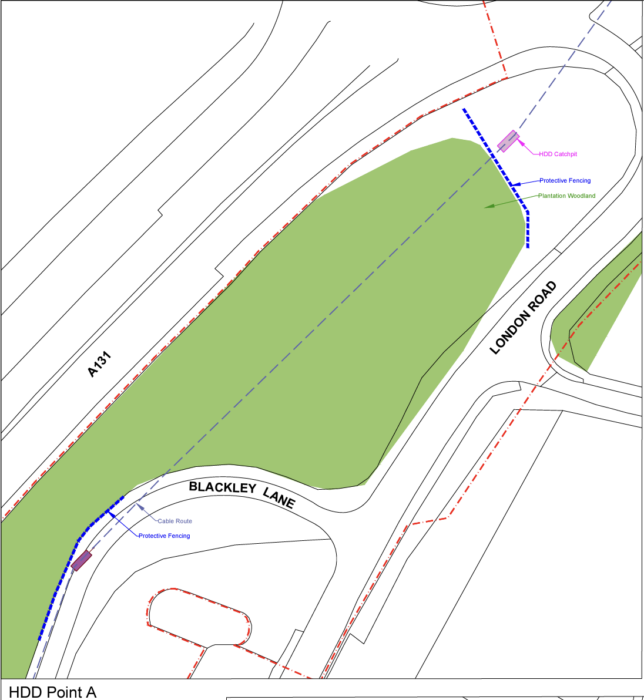
A tree protection assessment has been prepared as part of the planning application identifying woodland and hedgerow areas along the route and how they will be protected during construction.
HDD will be used to route the cable a sufficient distance below trees and hedgerow to ensure that roots are protected. Where the HDD rig is set up adjacent to woodland areas, temporary tree protection barriers would be erected (shown in blue on the drawing to the left) to safeguard above ground vegetation.
Measures, such as noise attenuation barriers and dust screens, would be put in place to manage environmental impacts from noise, air quality and debris during the construction process.
If planning permission is granted, a Construction Environmental Management Plan (CEMP) will be prepared ahead of construction commencing for the approval of the relevant Councils (Braintree, Chelmsford and Uttlesford). This will document both the ecological and environmental protection measures in place for the project and detail how this will monitored during construction.
Who we are
Clearstone Energy is a leading independent developer of renewable energy and energy storage projects that increase the availability of clean energy and improve the resilience of the electricity grid.
We are working with National Grid to develop a portfolio of strategically located solar generation and battery storage projects that will help build a UK energy system based on clean, low cost and renewable energy.
Our experienced team has a track record of developing successful renewable energy projects that are providing clean and reliable energy to communities across the UK.
Since founding in 2016, Clearstone Energy has developed nine energy projects in the UK. Two are operational and seven are in construction.
What happens next?
As the Proposed Development crosses (west to east) the administrative boundaries of Uttlesford District Council (UDC), Chelmsford City Council (CCC) and Braintree District Council (BDC) the application has been submitted to all three Local Planning Authorities (LPAs) for determination.
As part of the determination process each council will upload our planning application to its website and notify local residents that the application has been made.
We will provide links to the planning applications as soon as they’re available. Here you will be able to view construction plans, ecological surveys and maps of the cable route and submit any comments you have about the proposed project.
.
Detailed project overview
Talk to us.
As project neighbours your views are really important to us. Rosie Ritchie-Roux is the Development Manager for the Willows Green Solar Farm Cable project.
Whether its comments, feedback or questions we’d love to hear from you.

